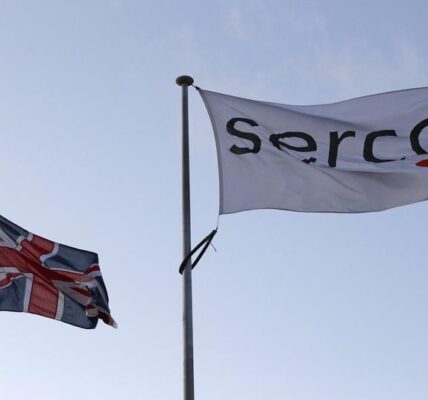Key Insights
- The projected fair value for Fortnox is kr77.12 based on 2 Stage Free Cash Flow to Equity
- With kr72.98 share price, Fortnox appears to be trading close to its estimated fair value
- Analyst price target for FNOX is kr78.63, which is 2.0% above our fair value estimate
In this article we are going to estimate the intrinsic value of Fortnox AB (publ) (STO:FNOX) by taking the expected future cash flows and discounting them to today’s value. This will be done using the Discounted Cash Flow (DCF) model. Before you think you won’t be able to understand it, just read on! It’s actually much less complex than you’d imagine.
We would caution that there are many ways of valuing a company and, like the DCF, each technique has advantages and disadvantages in certain scenarios. If you still have some burning questions about this type of valuation, take a look at the Simply Wall St analysis model.
View our latest analysis for Fortnox
Crunching The Numbers
We’re using the 2-stage growth model, which simply means we take in account two stages of company’s growth. In the initial period the company may have a higher growth rate and the second stage is usually assumed to have a stable growth rate. To start off with, we need to estimate the next ten years of cash flows. Where possible we use analyst estimates, but when these aren’t available we extrapolate the previous free cash flow (FCF) from the last estimate or reported value. We assume companies with shrinking free cash flow will slow their rate of shrinkage, and that companies with growing free cash flow will see their growth rate slow, over this period. We do this to reflect that growth tends to slow more in the early years than it does in later years.
Generally we assume that a dollar today is more valuable than a dollar in the future, so we need to discount the sum of these future cash flows to arrive at a present value estimate:
10-year free cash flow (FCF) forecast
| 2025 | 2026 | 2027 | 2028 | 2029 | 2030 | 2031 | 2032 | 2033 | 2034 | |
| Levered FCF (SEK, Millions) | kr807.0m | kr1.03b | kr1.38b | kr1.64b | kr1.86b | kr2.05b | kr2.20b | kr2.32b | kr2.41b | kr2.49b |
| Growth Rate Estimate Source | Analyst x4 | Analyst x4 | Analyst x1 | Est @ 18.89% | Est @ 13.58% | Est @ 9.87% | Est @ 7.27% | Est @ 5.45% | Est @ 4.17% | Est @ 3.28% |
| Present Value (SEK, Millions) Discounted @ 5.5% | kr765 | kr928 | kr1.2k | kr1.3k | kr1.4k | kr1.5k | kr1.5k | kr1.5k | kr1.5k | kr1.5k |
(“Est” = FCF growth rate estimated by Simply Wall St)
Present Value of 10-year Cash Flow (PVCF) = kr13b
We now need to calculate the Terminal Value, which accounts for all the future cash flows after this ten year period. The Gordon Growth formula is used to calculate Terminal Value at a future annual growth rate equal to the 5-year average of the 10-year government bond yield of 1.2%. We discount the terminal cash flows to today’s value at a cost of equity of 5.5%.
Terminal Value (TV)= FCF2034 × (1 + g) ÷ (r – g) = kr2.5b× (1 + 1.2%) ÷ (5.5%– 1.2%) = kr58b
Present Value of Terminal Value (PVTV)= TV / (1 + r)10= kr58b÷ ( 1 + 5.5%)10= kr34b
The total value, or equity value, is then the sum of the present value of the future cash flows, which in this case is kr47b. To get the intrinsic value per share, we divide this by the total number of shares outstanding. Relative to the current share price of kr73.0, the company appears about fair value at a 5.4% discount to where the stock price trades currently. The assumptions in any calculation have a big impact on the valuation, so it is better to view this as a rough estimate, not precise down to the last cent.
The Assumptions
We would point out that the most important inputs to a discounted cash flow are the discount rate and of course the actual cash flows. If you don’t agree with these result, have a go at the calculation yourself and play with the assumptions. The DCF also does not consider the possible cyclicality of an industry, or a company’s future capital requirements, so it does not give a full picture of a company’s potential performance. Given that we are looking at Fortnox as potential shareholders, the cost of equity is used as the discount rate, rather than the cost of capital (or weighted average cost of capital, WACC) which accounts for debt. In this calculation we’ve used 5.5%, which is based on a levered beta of 1.052. Beta is a measure of a stock’s volatility, compared to the market as a whole. We get our beta from the industry average beta of globally comparable companies, with an imposed limit between 0.8 and 2.0, which is a reasonable range for a stable business.
SWOT Analysis for Fortnox
- Earnings growth over the past year exceeded the industry.
- Dividend is low compared to the top 25% of dividend payers in the Software market.
- Annual earnings are forecast to grow faster than the Swedish market.
- Current share price is below our estimate of fair value.
- Revenue is forecast to grow slower than 20% per year.
Looking Ahead:
Valuation is only one side of the coin in terms of building your investment thesis, and it shouldn’t be the only metric you look at when researching a company. DCF models are not the be-all and end-all of investment valuation. Instead the best use for a DCF model is to test certain assumptions and theories to see if they would lead to the company being undervalued or overvalued. For instance, if the terminal value growth rate is adjusted slightly, it can dramatically alter the overall result. For Fortnox, there are three further elements you should look at:
- Financial Health: Does FNOX have a healthy balance sheet? Take a look at our free balance sheet analysis with six simple checks on key factors like leverage and risk.
- Management:Have insiders been ramping up their shares to take advantage of the market’s sentiment for FNOX’s future outlook? Check out our management and board analysis with insights on CEO compensation and governance factors.
- Other High Quality Alternatives: Do you like a good all-rounder? Explore our interactive list of high quality stocks to get an idea of what else is out there you may be missing!
PS. Simply Wall St updates its DCF calculation for every Swedish stock every day, so if you want to find the intrinsic value of any other stock just search here.
New: AI Stock Screener & Alerts
Our new AI Stock Screener scans the market every day to uncover opportunities.
• Dividend Powerhouses (3%+ Yield)
• Undervalued Small Caps with Insider Buying
• High growth Tech and AI Companies
Or build your own from over 50 metrics.
Explore Now for Free
Have feedback on this article? Concerned about the content? Get in touch with us directly. Alternatively, email editorial-team (at) simplywallst.com.
This article by Simply Wall St is general in nature. We provide commentary based on historical data and analyst forecasts only using an unbiased methodology and our articles are not intended to be financial advice. It does not constitute a recommendation to buy or sell any stock, and does not take account of your objectives, or your financial situation. We aim to bring you long-term focused analysis driven by fundamental data. Note that our analysis may not factor in the latest price-sensitive company announcements or qualitative material. Simply Wall St has no position in any stocks mentioned.





